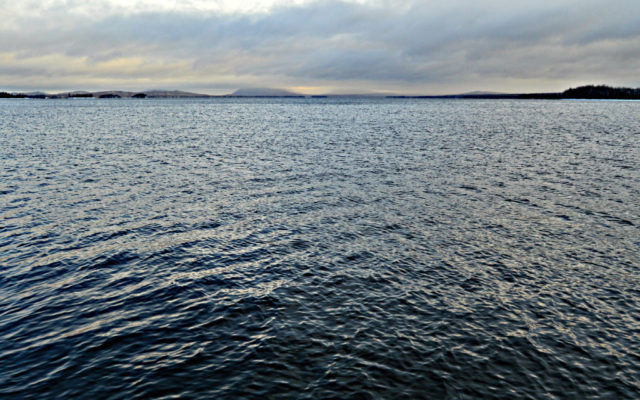
Stocking PFAS-contaminated waters is a symptom of a bigger problem
By Bob Mallard
Someone recently forwarded me an article from the Portland Press Herald about the Maine Department of Inland Fisheries and Wildlife stocking trout in contaminated water. While it covered a lot of ground, the underlying message was clear: The problems with stocking are many and varied.
While more about fishing and public safety than fish conservation, which is my primary focus, stocking trout in contaminated water shows just how deeply ingrained the stocking culture is at MDIF&W, and the impact it can have on our environment and lives.
The focus of the PPH article was small, kids-only fishing ponds in Fairfield that are contaminated with perfluoroalkyl or polyfluoroalkyl substances or PFAS, or what are known as “forever chemicals.”
Fairfield is ground-zero for PFAS contamination in Maine, and these ponds are said to be some of the most polluted waters in the state, the PPH indicated.
The contamination is bad enough that the state posted signs warning anglers not to eat any fish from the ponds. Unfortunately, the signs are said to be missing or difficult to read, according to the PPH.
That one state agency stocks fish and another tells the public not to eat them shows a major disconnect.
Maine has a culture of fish consumption, especially brook trout, the species stocked at the kids fishing ponds. For many Mainers, freshly caught brook trout are a delicacy and rite of passage. Whether the fish are stocked or wild is often irrelevant.
MDIF&W regularly promotes harvest, and by default the consumption of trout, as a way to “improve” fisheries and best utilize the resource.
It does so on its website, newsletter and signs posted at high-traffic areas such as the L.L.Bean flagship store in Freeport in language such as this on its website: “…but otherwise, you can decide which legally harvestable fish to keep for consumption. Many fishing regulations are designed to improve fish growth and size quality, and they are only successful if fish are harvested by anglers.”
In the case of the PFAS-contaminated kids ponds in Fairfield, MDIF&W allows anglers to legally harvest up to five fish a day. A note at the bottom of the water-specific regulation for the ponds states, “(See Fish Consumption Advisories on page A-4).”
The water-specific warning says, “Do not eat any fish from these waters.” If it’s not safe to eat the fish, anglers should not be allowed to harvest them.
While these ponds are referred to as “Fairfield Recreational (PAL) Ponds” on the Maine Inland Fishing Laws book (print and online) and related online Special Fishing Laws, they are called “Police Athletic League (PAL) Ponds” on the fish-consumption advisory section of the law book.
While those who live in the area may know they are the same bodies of water, will those unfamiliar with the area know?
Should we expect children under 16 to read signs or reference the lawbook for fish-consumption advisories? Even if they do, will they heed the advice and forgo bringing a few fish home for dinner, or might they ignore the warnings and consume the fish or give them to some unsuspecting relative, friend or neighbor to eat?
Making matters worse is a quote in the PPH article from MDIF&W that downplays and even challenges the dangers of PFAS: “In an ideal world, yes, we’d put the fish where there are no health issues, but there’s still a lot we don’t know about PFAS.”
Another PPH quote attributed to MDIF&W likens eating a PFAS-contaminated fish to consuming too much barbecue, while putting it back on the angler, which in this case is children under 16 years old.
The Fairfield kids ponds are not the only PFAS-contaminated waters in Maine stocked with trout. Out of 12 waters listed by MDIFW as contaminated with PFAS, seven or eight are being stocked with trout. Of these, four suggest that you do not consume more than 3-4 “meals” of trout a year, while it is suggested you eat no fish at all from the Fairfield kids ponds.
Another MDIF&W list warns anglers against consuming fish from waters contaminated with PCBs, Dioxins, and DDT. Of the 14 entries, at least five are being stocked, according to the state. Consumption warnings range from no more than five to 24 meals a year, the worst of which is the popular Shawmut stretch of the Kennebec River.
With the exception of the uppermost section of the Androscoggin River, all of the contaminated stocked waters are open to the harvest of fish. In all cases, the legal daily limit when compounded over multiple days far exceeds that recommended in the associated fish consumption advisory.
MDIF&W is responsible for the decision to stock trout in the Fairfield kids ponds and other contaminated waters. It is also responsible for allowing the harvest of fish from contaminated water. Like when they stock non-native species or over wild native fish, placing a higher value on stocking than environmental health. In this case, MDIF&W is placing a higher value on stocking than human health.
Stocking contaminated waters and allowing anglers to harvest fish at a rate that exceeds the published fish consumption advisory is risky. Getting harvest limits in line with consumption advisories would be prudent. In extreme cases, it may be best to suspend stocking and close the water to fishing.